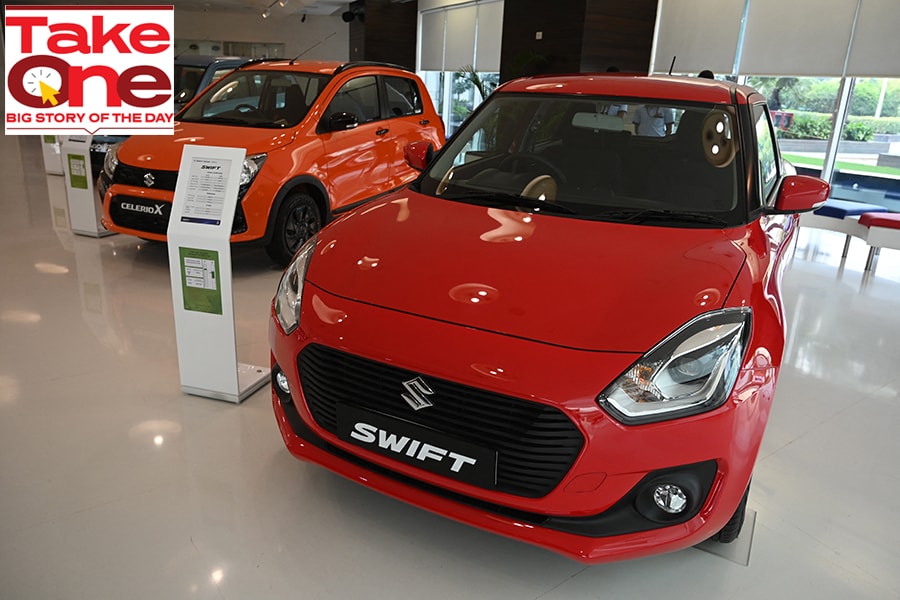
For 40 years, Maruti Suzuki ruled India's roads. Can it continue its dominance?
The carmaker has been a late entrant in the SUV and electric segments, and is now investing heavily in both
 Maruti Suzuki cars are on display at a showroom in New Delhi. Image: Money SHARMA / AFP
Maruti Suzuki cars are on display at a showroom in New Delhi. Image: Money SHARMA / AFP
In 1982, a year into his deputation with the then government-owned Maruti Udyog Ltd, a small car project launched by the Indian government, RC Bhargava had a tough choice to make. He had to either stay in the Indian civil services, which meant leaving Maruti Suzuki and going back to work for the government with a fair chance of becoming Cabinet secretary in a few years or sticking on with the public carmaker in a country where a paltry 40,000 cars were sold annually.
Back then, India’s roads were ruled by the CK Birla Group-owned Hindustan Motors and Walchand group-owned Premier Automobiles, which made the popular Fiat cars. “The existing carmakers were going nowhere,” Bhargava, now 88, told a room full of reporters in Ahmedabad in August, where he had come to celebrate Maruti Suzuki’s 40th year of operations. “The market was stagnant at 35,000 to 40,000 cars. Everything was wrong in those days. There were foreign exchange shortages and all kinds of restrictions on imports. So, the sector was not something that excited anybody.”
The decision, however, came to Bhargava quickly, he now reckons. Two decades of being a bureaucrat had made him somewhat disillusioned by how governments function. He soon hung up his civil services career and continued as director of sales and marketing at Maruti Udyog. It is in that role that he and V Krishnamurthy, then managing director of Maruti Udyog, travelled to Japan to meet Osamu Suzuki, the then CEO of Suzuki Motor Corporation, to cement a deal that would see the Japanese automaker team up with the Indian carmaker as a minor partner, and provide technical knowledge for the project.
“Suzuki told me once that when he decided to partner, he was the only person in favour of it,” Bhargava recalls. “Everybody else thought, what kind of decision is that? And that is what most people felt here in India too about the project.”
Forty years later, Suzuki, now 91, was alongside Bhargava at Gandhi Nagar’s Mahatma Mandir along with Prime Minister Narendra Modi, to announce Suzuki‘s latest round of investments in India. On August 28, Suzuki announced plans to invest over Rs 30,400 crore, of which Rs 10,400 crore will go into making cells for electric vehicles (EVs) and ramping up capacity to make EVs, while another Rs 20,000 crore will be used for manufacturing 1 million vehicles, across electric and internal combustion engine (ICE) powertrains.









